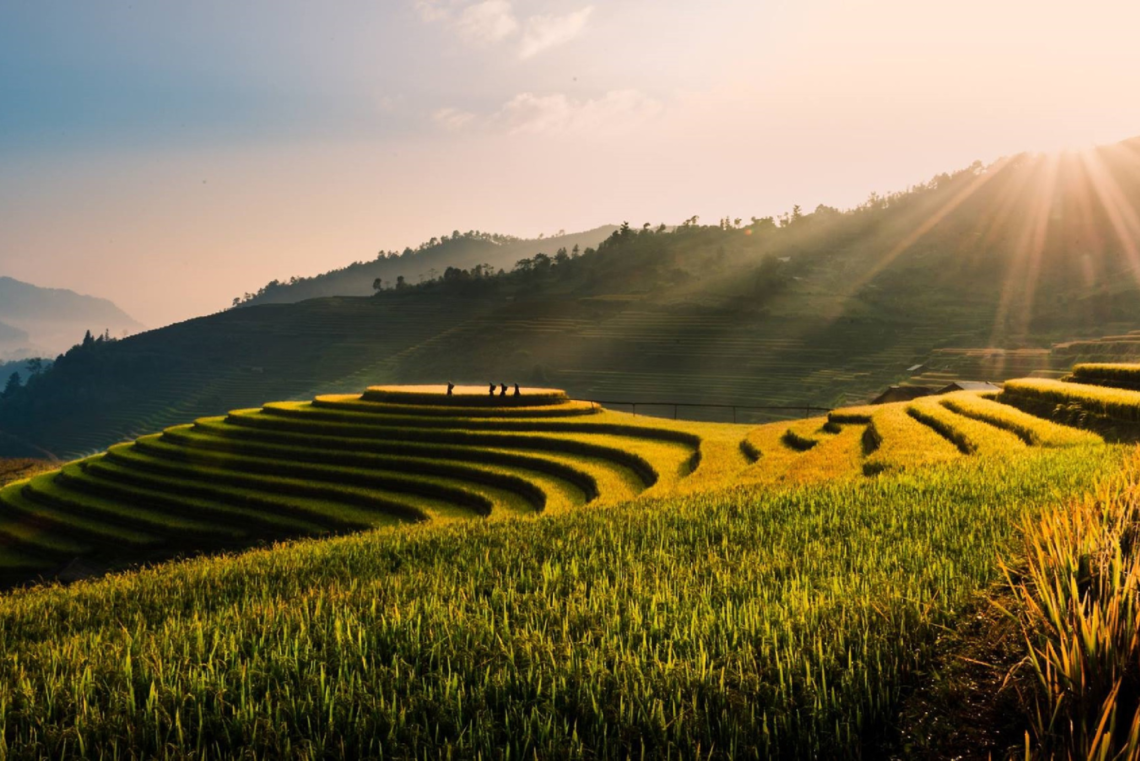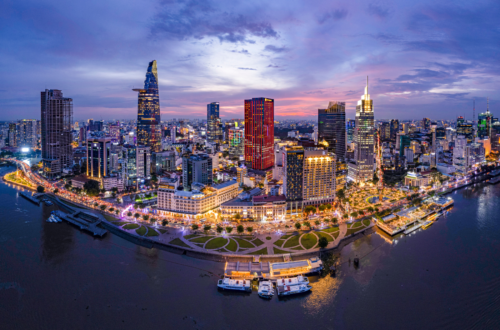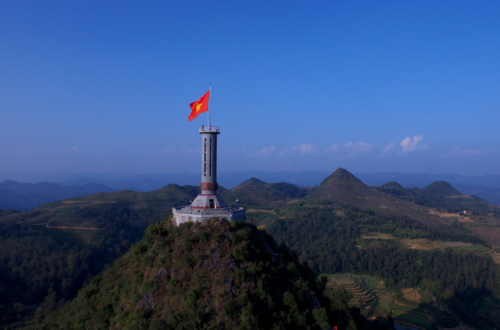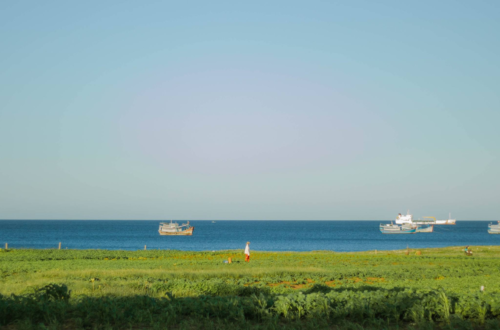Sapa is a hidden gem in the northwest mountains of Vietnam. A dream destination with beautiful terraced rice fields awaits. You can find a vibrant mix of cultures and breathtaking landscapes there. Sapa welcomes visitors all year long, but figuring out the best time to visit Sapa can make your trip even better.
Understanding Sapa’s Climate and Seasons
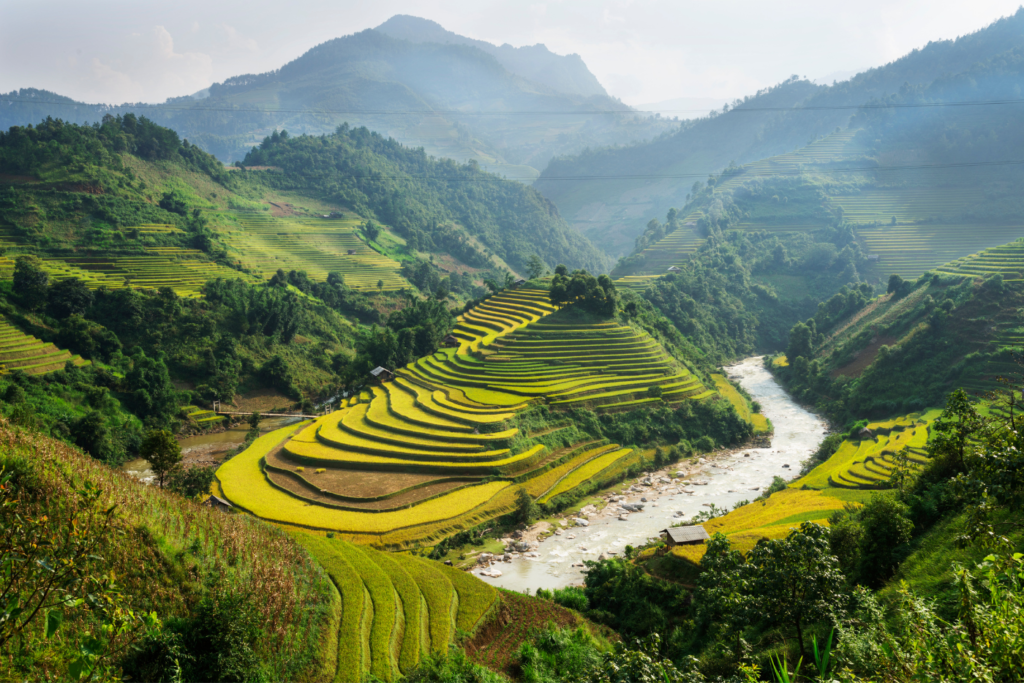
Sapa has a climate influenced by its mountains. This creates four different seasons, each providing unique experiences for visitors.
Spring (March to May) | Best Time to Visit Sapa
Spring in Sapa has mild temperatures between 10°C and 22°C (50°F to 72°F), perfect for outdoor activities. The region comes alive with vibrant blooms of cherry blossoms, azaleas, and orchids, especially around Ham Rong Mountain.
Also, a time for cultural festivals like Gau Tao allows enjoyment of the traditions of the Hmong people. They can experience dances, music, and local games. The season’s lively markets, such as Bac Ha Sunday Market, add to the vibrant atmosphere.
Summer (June to August) | Best Time to Visit Sapa
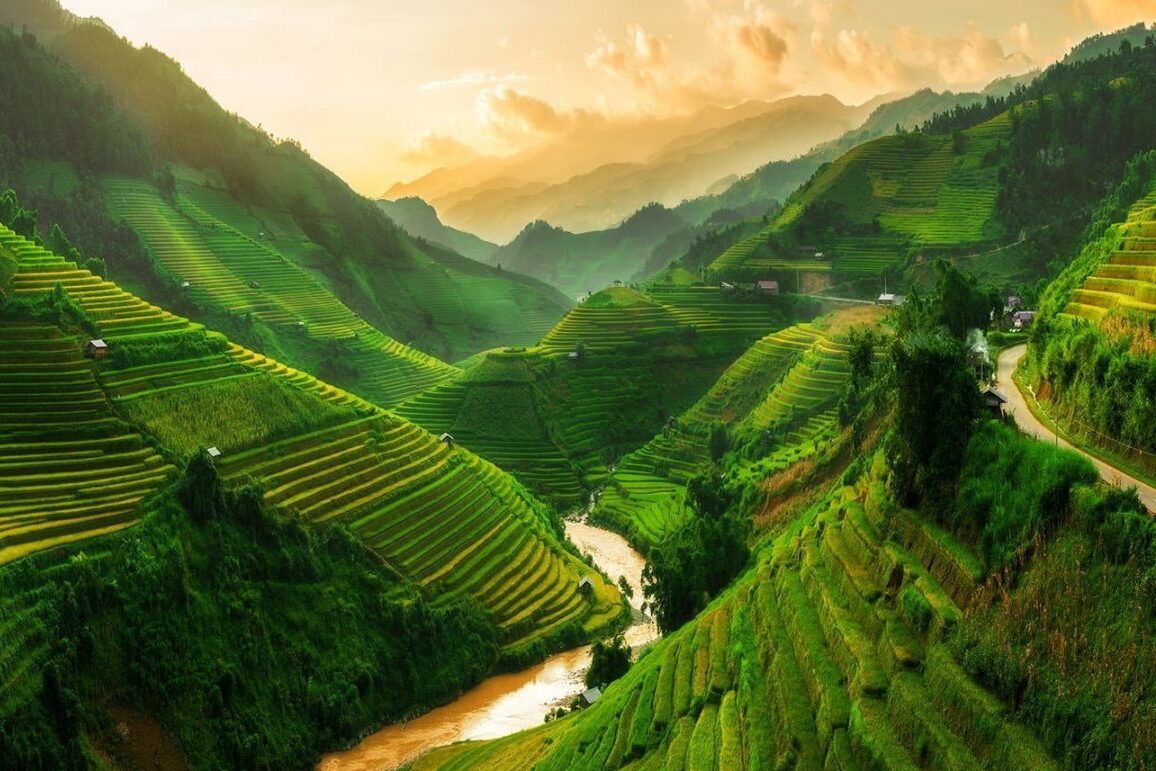
Marked by the rainy season, summer in Sapa brings lush greenery to its terraced rice fields. Temperatures are between 15°C and 25°C (59°F to 77°F). Rain showers happen often, but they make waterfalls like Silver and Love Waterfall even more beautiful.
Adventure seekers can enjoy hiking through green landscapes. However, they should wear waterproof gear and hire a local guide for safety.
Autumn (September to November) | Best Time to Visit Sapa
Often considered the best season for breathtaking landscapes, autumn showcases golden terraced rice fields ready for harvest. The weather is mild, with temperatures from 15°C to 20°C (59°F to 68°F). Clear skies offer great views from Fansipan Peak or O Quy Ho Pass. This period is perfect for photography and cultural exploration in ethnic minority villages like Ta Van and Cat Cat.
Winter (December to February) | Best Time to Visit Sapa
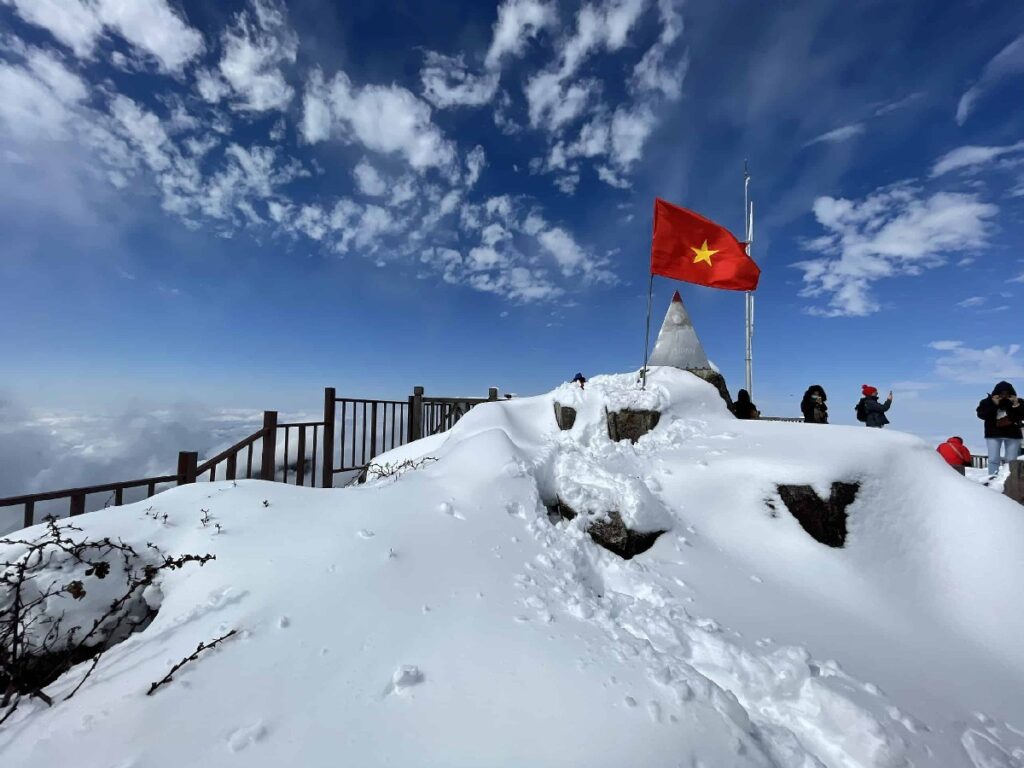
Winter brings a chill to Sapa. Temperatures can drop to 5°C (41°F) or lower, especially in higher areas. Snowfall is rare but possible, turning Fansipan Mountain into a winter wonderland. The season’s misty mornings and frosted landscapes offer a magical experience.
Lunar New Year celebrations during this time bring cultural richness. Staying in traditional homestays offers warmth and a connection with local families.
Best Time to Visit Sapa for Scenic Beauty: September to November
If your goal is to witness Sapa’s stunning landscapes, plan your trip during the autumn months of September to November. This period offers mild weather, clear skies, and vibrant colors. Here’s why this is a prime time:
Golden rice terraces
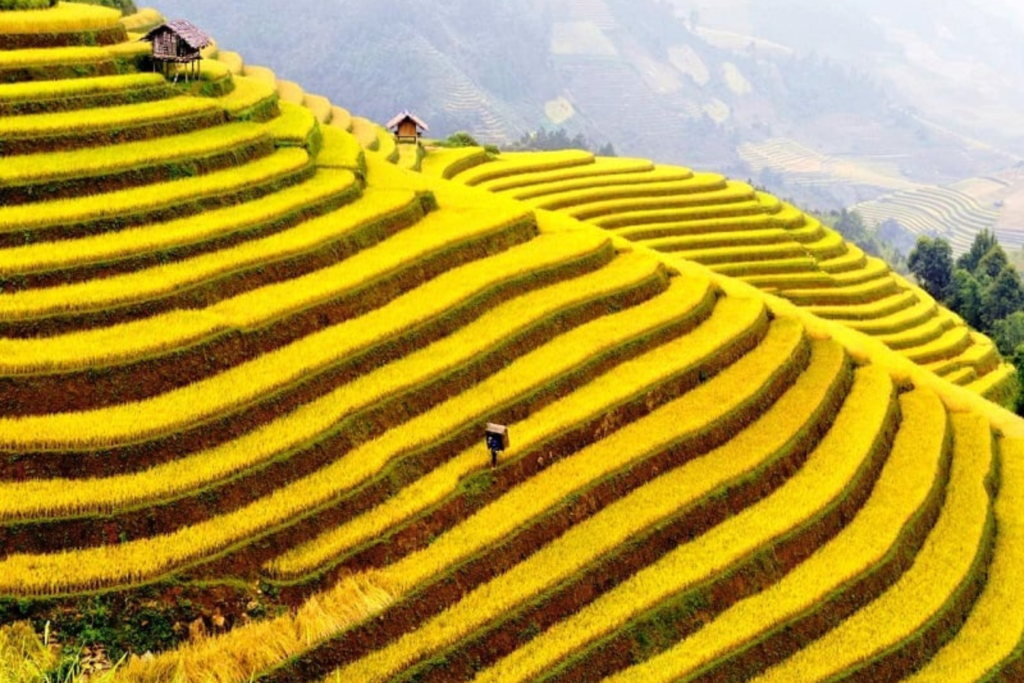
The rice terraces look their best in September and early October. During this time, the harvest turns the hillsides into waves of gold. This spectacle is a favorite among photographers and nature lovers. The terraces in Muong Hoa Valley and Ta Phin Village are particularly breathtaking during this time.
Clear skies
Autumn brings the clearest weather conditions, allowing unobstructed views of the surrounding mountains and valleys. Popular spots like Fansipan Peak, Heaven’s Gate, and O Quy Ho Pass offer stunning panoramas.
Comfortable climate
With temperatures between 15°C and 20°C (59°F to 68°F), outdoor activities are fun. You can enjoy hiking and sightseeing during this weather. Trails that lead to ethnic minority villages, like Cat Cat and Lao Chai, are great for exploring now.
Best Time to Visit Sapa for Cultural Experiences: March to May
For travelers who want to experience Sapa’s unique culture, the best time is from March to May. During this time, the region comes alive with traditional celebrations and natural beauty.
Ethnic festivals
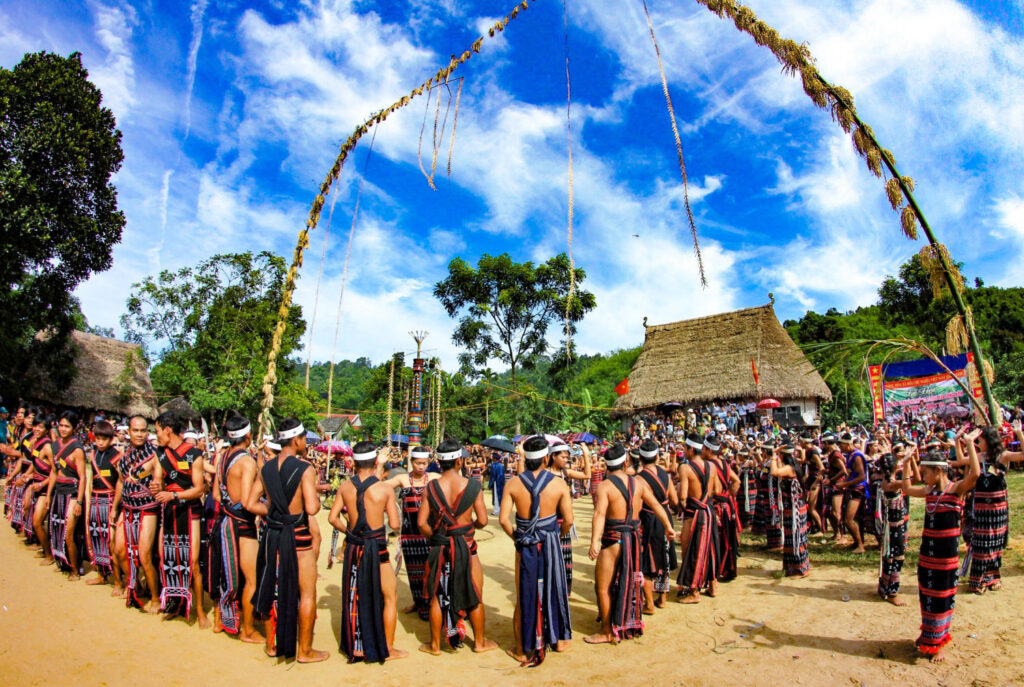
Spring features festivals like Gau Tao and Roong Pooc. These events highlight the customs, dances, and music of ethnic groups. Some of these groups include the Hmong, Dao, and Tay. Visitors can participate in traditional games, watch colorful performances, and sample local cuisine during these events.
Blooming flowers
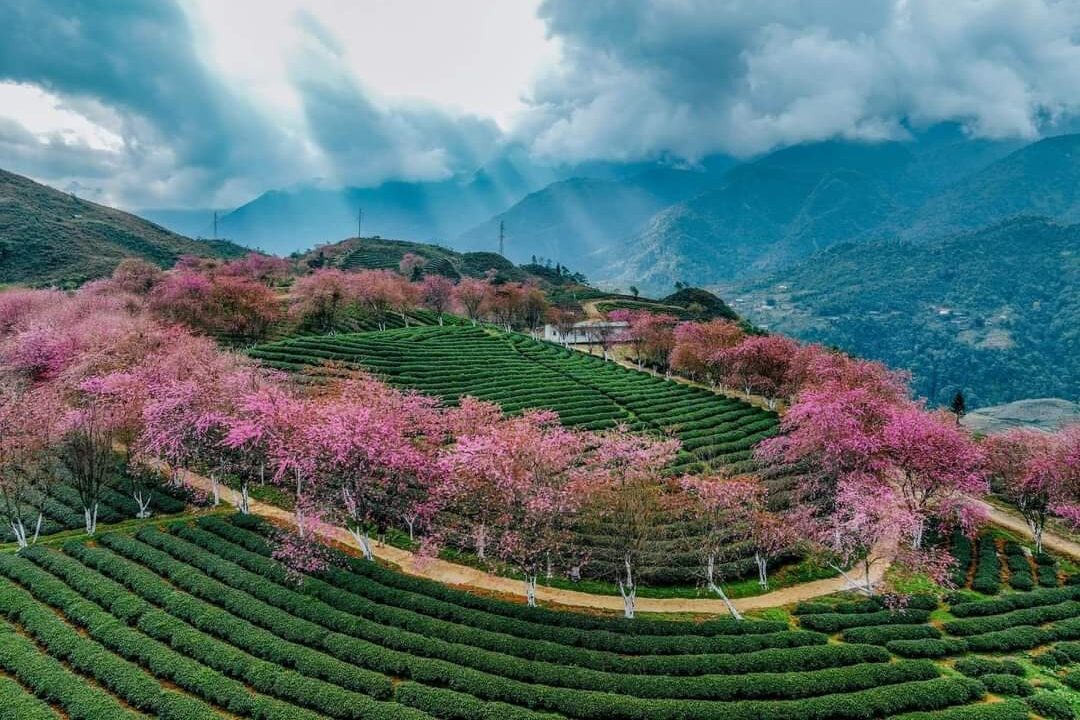
Fields of cherry blossoms, azaleas, and orchids brighten the landscape. They add color to Sapa’s beautiful scenery. The area around Ham Rong Mountain is particularly famous for its vibrant floral displays.
Mild weather
Spring has temperatures between 10°C and 22°C (50°F to 72°F). This weather is great for exploring villages, markets, and local attractions. The Bac Ha Sunday Market is a must-visit for its lively atmosphere and diverse offerings.
Best Time to Visit Sapa For Adventure Seekers: June to August
Summer in Sapa, from June to August, is ideal for adventurous travelers who enjoy lush greenery and dynamic weather. While it’s the rainy season, it also offers unique opportunities.
Verdant Rice Fields
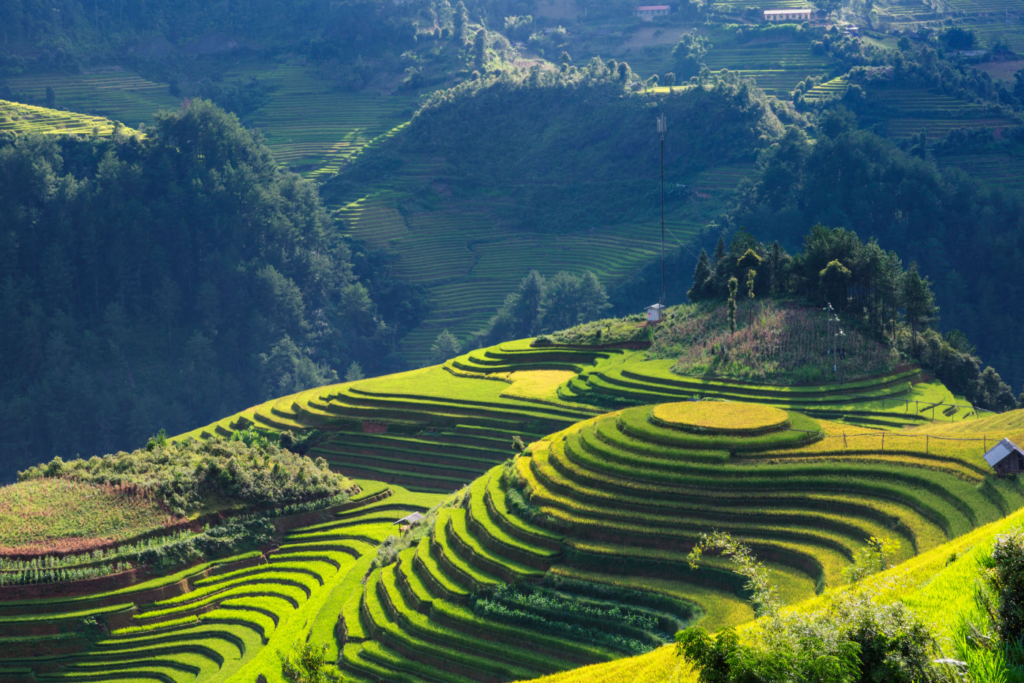
The rain nurtures the terraced rice fields, turning them into lush green expanses that are a sight to behold. The vibrant greenery creates a stark contrast against the misty mountains, making for stunning photographs.
Waterfalls and streams
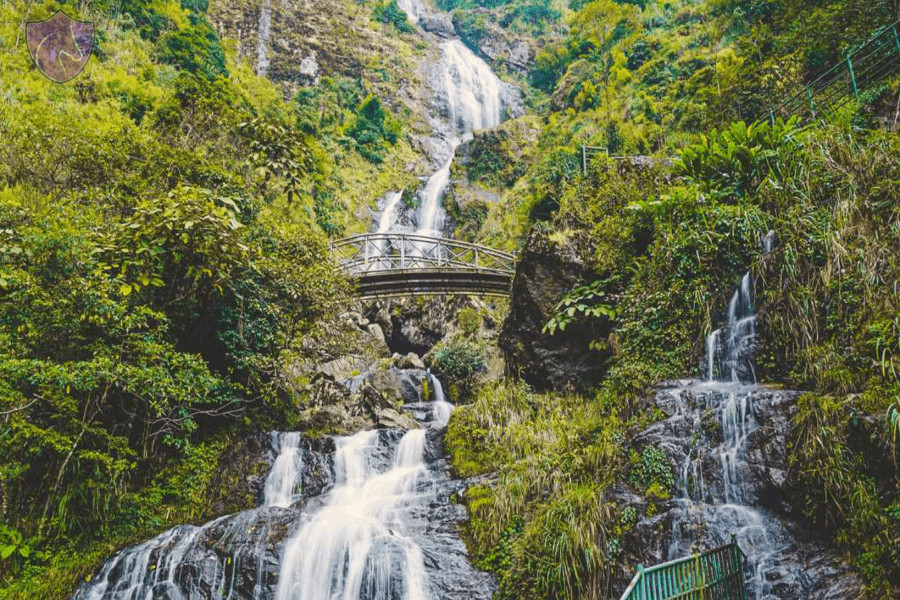
The rainy season makes Sapa’s waterfalls even more beautiful. Silver Waterfall and Love Waterfall become stronger and more stunning. These spots are ideal for nature lovers and photographers.
Trekking adventures
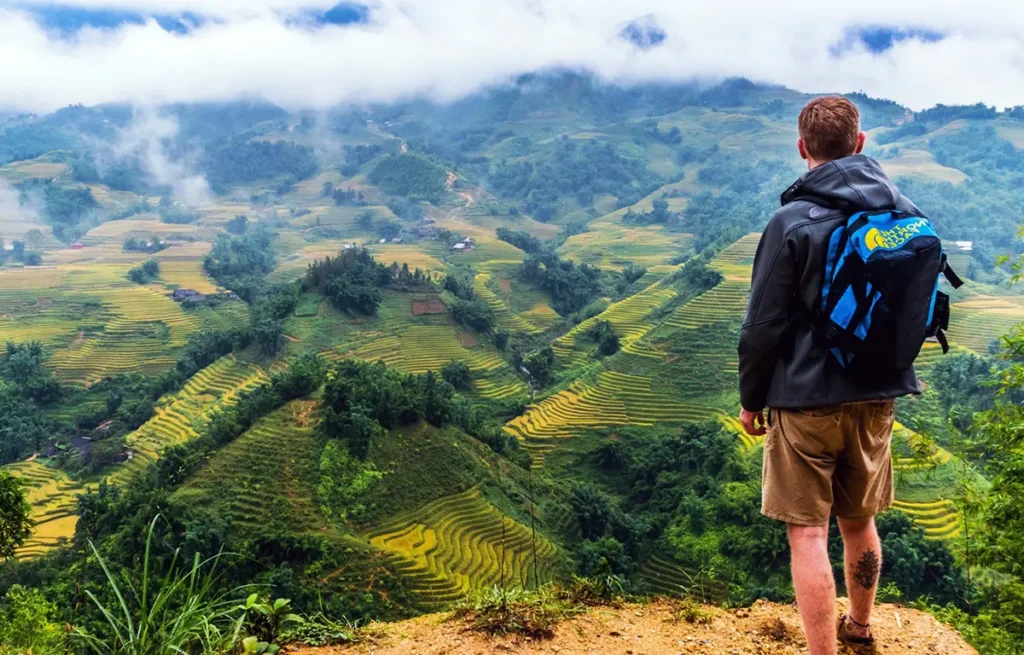
Although rain can make trails slippery, the lush scenery and cool temperatures make summer trekking an unforgettable experience. Hiring a local guide ensures safety and provides insights into the area’s rich culture and history. Fansipan Mountain, also known as the “Roof of Indochina,” is a popular destination for climbers during this season.
Local agriculture
Visitors can see farmers planting rice and taking care of their fields. This shows the traditional farming methods of the area.
Best Time to Visit Sapa for Unique Winter Experiences: December to February
Winter in Sapa, from December to February, offers a magical experience for those who don’t mind the cold. While the weather can be unpredictable, the season has its own charm.
Snow-capped peaks
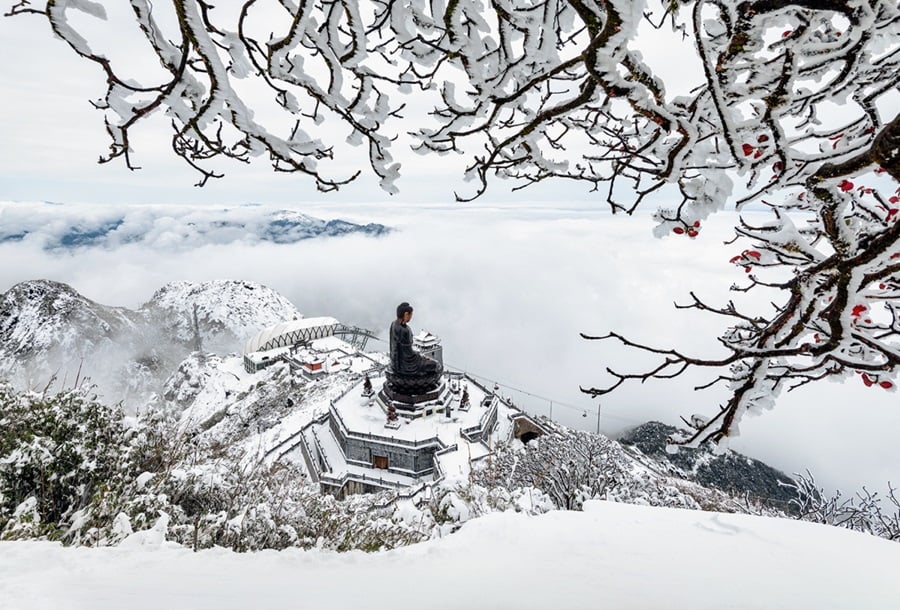
Occasionally, snowfall graces the region, transforming Sapa into a winter wonderland. Fansipan Mountain, the highest peak in Indochina, becomes a popular destination for snow enthusiasts. The cable car ride to the summit provides breathtaking views of the snow-covered landscape.
Festive atmosphere
Lunar New Year (Tet) falls in this period, providing a chance to witness traditional celebrations and rituals. Families gather to prepare special dishes, and they adorn the streets with red and gold decorations.
Cozy homestays
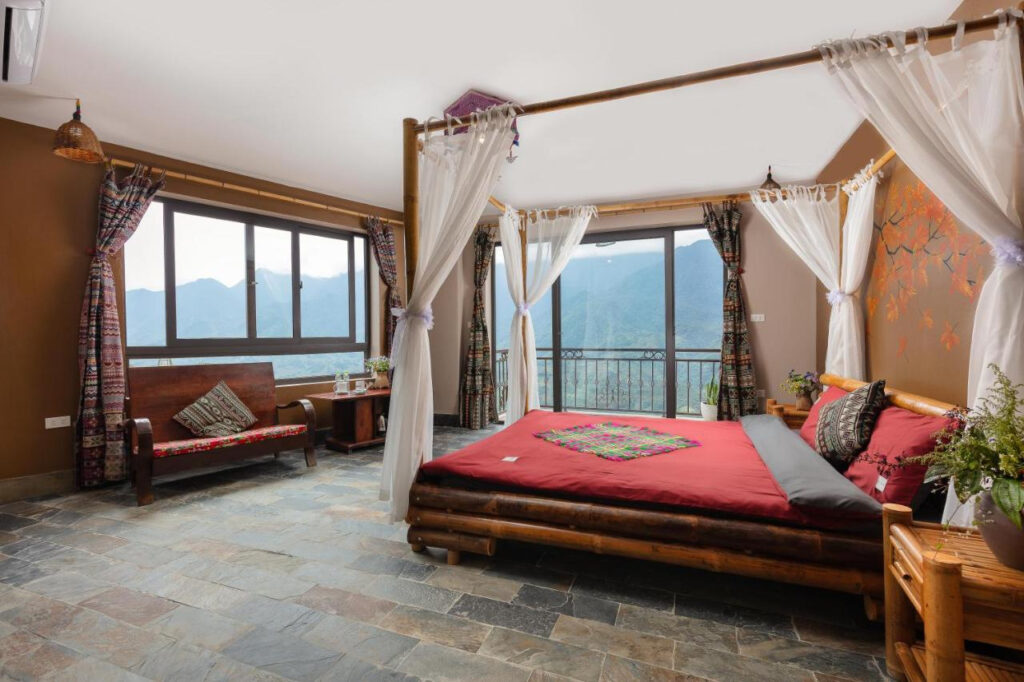
The chilly weather is great for staying in a cozy homestay. You can enjoy warm meals, local wine, and stories by the fire to connect with local families and learn about their customs.
Frosted landscapes
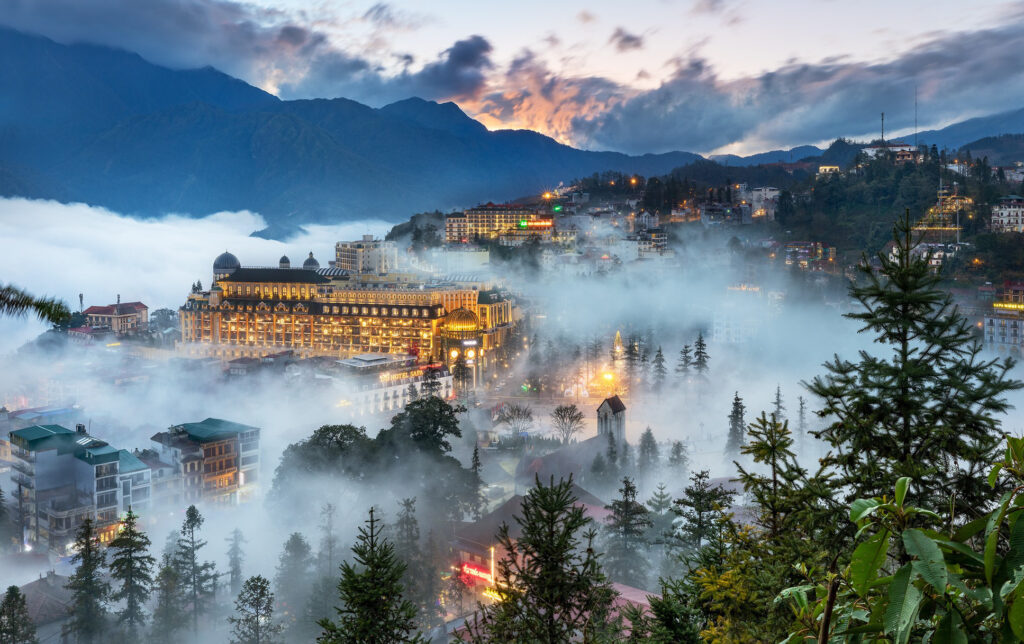
Morning frost creates a dreamy atmosphere, with fields and trees covered in a delicate layer of ice. This rare phenomenon attracts photographers and nature enthusiasts.
Month-by-Month Guide
- January & February: Cold and misty, with chances of snow. Ideal for cultural festivals, snow photography, and quiet exploration. Pack warm clothing to stay comfortable.
- March to May: Spring flowers and ethnic celebrations. Perfect for cultural immersion, trekking, and enjoying pleasant weather. Don’t miss Ham Rong Mountain’s floral gardens.
- June to August: Rainy but vibrant. Best for green rice terraces, waterfalls, and adventurous activities. Be prepared for occasional downpours with waterproof gear.
- September & October: Harvest season with golden fields. Prime time for photography, trekking, and scenic views. The Muong Hoa Valley is a highlight during this period.
- November: Clear skies and cool weather. Great for trekking and enjoying the last of the autumn colors. A quieter time with fewer tourists exists.
- December: Winter sets in, offering a serene and festive atmosphere. A great choice for those seeking snow and cozy experiences.
Tips for Planning Your Trip
Pack accordingly: Bring layers, waterproof gear, and sturdy footwear to adapt to Sapa’s variable weather. Don’t forget sunscreen and insect repellent for outdoor activities.
Book in advance: Popular seasons like autumn and spring attract many visitors, so secure your accommodation and transportation early. Homestays and eco-lodges are highly recommended for an authentic experience.
Hire a local guide. Guides improve your experience by sharing cultural insights. They also help you navigate Sapa’s rough terrain safely. They can also introduce you to lesser-known trails and villages.
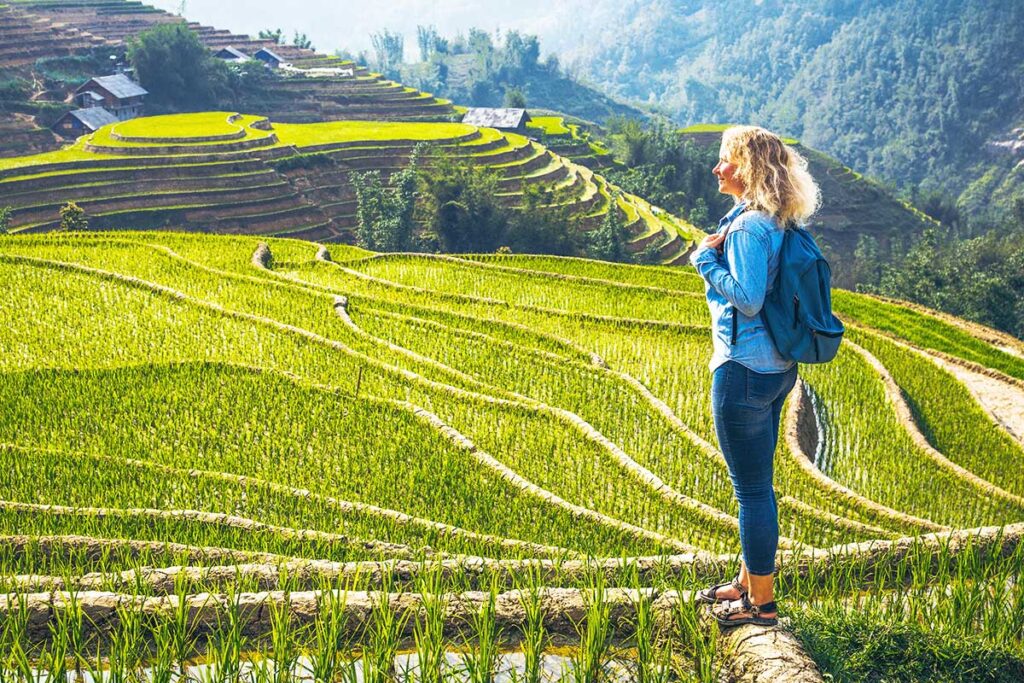
Respect local customs: When visiting villages, dress modestly and seek permission before taking photographs of locals. Learning a few basic phrases in their language, such as “hello” or “thank you,” can go a long way in building rapport.
Stay updated: Weather in Sapa can change rapidly, so check forecasts and prepare accordingly. Rain gear is essential during the summer months.
Conclusion
Sapa has different seasons that offer something for every traveler. You can enjoy its beautiful landscapes, rich culture, or exciting adventures.
Plan your visit based on your interests. Focus on the seasonal highlights. This way, you will create unforgettable memories in this magical place.
